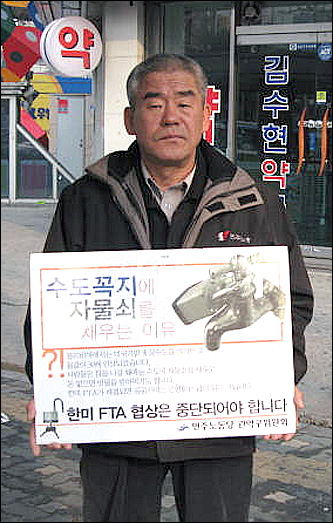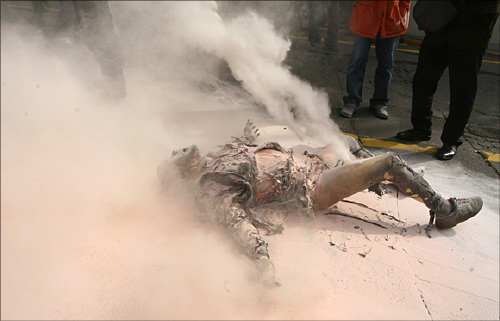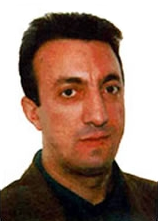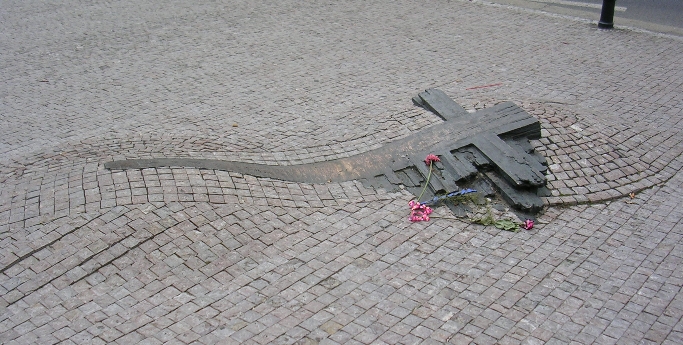1971 - 2008
The IRA (Catholic Base) stands down in 2001 and Al-Qaeda (Muslim Base) moves in.....
The Last IRA attack on British soil took place in 2001. As from 2001, Al-Qaeda has established itself as a recognized threat to the US and the UK.
The Angry Brigade, Animal Rights Militia and far right politics have also left Wake Up Calls demonstrating grievances on British soil. In some cases, nobody has claimed responsibility for an attack and assumptions have been made by the authorities and media.
2008, 22 May: Princesshay Shopping Mall, Exeter, Devon. Nicky Reilly British, Muslim Convert.
2007, 30 June: Glasgow International Airport Attack. Dr. Bilal Abdullah, 27, born in the UK, and moved to Iraq as a child. Arrested immediately at Glasgow International Airport with Dr. Kafeel Ahmed, aka Khalid Ahmed, born in India.
2007, 29 June: London, two car bombs were discovered and disabled before they could be detonated. The first device was left near the Tiger Tiger nightclub in Haymarket and the second was in Cockspur Street, in the same area of the city.
2007, January - February: The 2007 United Kingdom Letter Bombs. Miles Cooper, a 27 year-old former primary school caretaker from Cherry Hinton near Cambridge was charged.
On 7 February, a device was sent to the main Driver and Vehicle Licensing Agency centre in Swansea, south Wales. Four workers were taken to Hospital in Swansea.
On 6 February, a device was sent to the accountancy firm Vantis plc in Wokingham, Berkshire. The accountancy firm acted as the registered office of Speed Check Services Limited, a company that provided digital speed cameras to police. Two men received minor injuries, but did not need hospitalisation.
On 5 February, a device was sent to the Capita centre in Victoria, London, that deals with the congestion charge in London. One person was injured.
On 3 February a device was sent to the "Senior Manager" of dissolved Alpha Security company that used to be run from a private house in Folkestone, Kent. It was addressed to Mike Wingfield, 53, who suffered minor injuries to his hands, face and stomach.
On 18 January a device sent to the Forensic Science Service in Chelmsley Wood, West Midlands. On the same day, another device was sent to Orchid Cellmark in Abingdon, Oxfordshire, and another to a company, LGC Forensics, located in Culham, near Abingdon.
2005, 21 July: The 21 July 2005 London bombings, also conducted by four would-be suicide bombers on the public transport, whose bombs failed to go off.
2005, 7 July: The 7 July 2005 London bombings conducted by four separate suicide bombers, killing 56 people and injuring 700.
2001, 3 November: Car bomb explodes in Birmingham. Blamed on Irish Dissidents.
2001, 3 August: The Real IRA detonated a car bomb containing 45kg of explosives in Ealing Broadway, West London, England injuring seven people.
2000 1 June: Real IRA suspected of planting a high-explosive device attached to a girder under the south side of Hammersmith Bridge which detonated at 4.30am.
2001, 6 May: The Real IRA detonate a bomb in a London postal sorting office. One person was injured.
2001, 14 April: Hendon post office bombed.
2001, 4 March: A car bomb explodes outside the BBC's main news centre in London. One London Underground worker suffered deep cuts to his eye from flying glass and some damage was caused to the front of the building.
2000, 20 September: Rocket Propelled Grenade attack - SIS Building, London.
2000, 1 June: Bomb explodes on Hammersmith Bridge.
1999, 17 April, 24 April, 30 April: David Copeland set off three nail bombs in London targeting the black, Asian and gay communities respectively, killing 3 and injuring 129.
1996, 15 June: The Manchester bombing when the IRA detonated a 1500 kg bomb which destroyed the Arndale shopping centre and injured 206 people.
1996, 18 February: An improvised high explosive device detonates prematurely on a bus travelling along Aldwych in central London, killing Edward O'Brien, the IRA operative transporting the device and injuring eight others.
1996, 15 February: A 5 lb bomb placed in a telephone box is disarmed by Police on the Charing Cross Road.
1996, 9 February: The IRA bombs the South Quay area of London, killing two people.
1993, 23 October: In Reading, Berkshire, an IRA bomb exploded at a signal post near the railway station, some hours after 5 lb (2 kg) of Semtex was found in the toilets of the station. The resulting closure of the railway line and evacuation of the station caused travel chaos for several hours, but no-one was injured.
1993, 24 April: IRA detonate a huge truck bomb in the City of London at Bishopsgate. It killed journalist Ed Henty, injured over 40 people, and causing approximately £1 billion worth of damage, including the destruction of St Ethelburga's church, and serious damage to Liverpool St. Tube Station. Police had received a coded warning, but were still evacuating the area at the time of the explosion. The insurance payments required were so enormous, that Lloyd's of London almost went bankrupt under the strain, and there was a crisis in the London insurance market. The area had already suffered damage from the Baltic Exchange bombing the year before. (see 1993 Bishopsgate bombing)
1993, 20 March: Warrington bomb attacks. The first attack, on a gasworks, created a huge fireball but no casualties, but the second attack on Bridge Street killed two children and injured many other people. The attacks were conducted by the IRA.
1992, 3 December: The IRA exploded two bombs in central Manchester, injuring 65 people.
1992, 16 November: IRA plants a bomb at the Canary Wharf, but is spotted by security guards. The bomb is deactivated safely.
1992, 12 October: A device explodes in the gents' toilet of the Sussex Arms public house in Covent Garden killing one person and injuring four others.
1992, 25 August: The IRA plant three fire bombs in Shrewsbury, Shropshire. Bombs were placed in Shoplatch, The Charles Darwin Centre and Shrewsbury Castle. The latter causing the most damage as the castle housed the Shropshire Regimental Museum and many priceless historical aritifacts were lost and damaged by fire and smoke. No fatalities or injuries were recorded.
1992, 10 April: A large bomb explodes in St Mary Axe in the City of London. The bomb was contained in a large white truck and consisted of a fertilizer device wrapped with a detonation cord made from Semtex. It killed three people: Paul Butt, 29, Baltic Exchange employee Thomas Casey, 49, and 15-year old Danielle Carter. The bomb also caused damage to surrounding buildings, many of which were also badly damaged by the Bishopsgate bombing the following year. The bomb caused £800 million worth of damage, £200 million more than the total damaged caused by the 10,000 explosions that had occurred during the Troubles in Northern Ireland up to that point.
1992, 28 February: A bomb explodes at London Bridge station injuring 29 people.
1991, 18 February: A bomb explodes at Victoria Station. One man is killed and 38 people injured.
1991, 7 February: The IRA launched three mortar shells into the back garden of 10 Downing Street.
1990, 30 July: Ian Gow MP killed by a car bomb planted by the IRA while at his home in Sussex.
1990, 20 July: The IRA detonate a bomb at the London Stock Exchange causing damage to the building. Nobody was injured in the blast.
1990, 1 June: Lichfield City railway station - 1 solder is killed and 2 are injured in a shooting by the IRA.
1990, 16 May: Wembley IRA detonate a bomb underneath a minibus killing Sgt Charles Chapman (The Queen's Regiment) and injuring another soldier.
1989, 22 September: Deal barracks bombing: Eleven Royal Marines bandsmen are killed and 22 injured when base in Deal, Kent, is bombed by the IRA.
1988, 21 December: Pan Am Flight 103 (Lockerbie) blown up by a bomb in a suitcase while in flight over Scotland after taking off from Heathrow. 270 were killed.
1985: Police found 10 grenades, seven petrol bombs and two detonators at the home of Tony Lecomber (far right politics) after he was injured by a nail bomb that he was carrying to the offices of the Workers' Revolutionary Party. Convicted under the Explosive Substances Act 1883.
1984, 12 October: Brighton hotel bombing, 5 killed and several injured in an attempt by the IRA to kill Margaret Thatcher.
1983, 17 December: Harrods was bombed by the IRA. Six are killed (including three police officers) and 90 wounded during Christmas shopping at the West London department store.
1982, 30 November: A group called the Animal Rights Militia sent a letter bomb to Margaret Thatcher at 10 Downing Street, the device exploded injuring one person.
1982, 20 July: The Hyde Park and Regents Park bombings in London by the IRA kill eleven members of the Household Cavalry and the Royal Green Jackets.
1980, 30 April: The Iranian Embassy Siege where a six-man terrorist team held the building for six days until the hostages were rescued by a raid by the SAS which was broadcast live on TV.
1979, 30 March: Airey Neave killed when a car bomb exploded under his car as he drove out of the Palace of Westminster car park. The Irish National Liberation Army (INLA) claimed responsibility for the killing.
1974, 21 November: The Birmingham pub bombings, 21 killed and 182 injured by Provisional IRA bombs.
1974, 22 October: A bomb planted by the Provisional IRA explodes in London injuring 3 people.
1974, 5 October: Guildford pub bombing by the Provisional IRA leaves 4 off duty soldiers and a civilian dead and 44 injured.
1974, 17 June: The Provisional IRA plant a bomb which explodes at the Houses of Parliament, causing extensive damage and injuring 11 people.
1974, 4 February: Eight Soldiers and 4 civilians are killed by the Provisional IRA in the M62 Coach Bombing.
1973, 10 September: The Provisional IRA set off bombs at London's King's Cross Station and Euston Station injuring 21 people.
1972, 19 September: The group Black September post a letter bomb to the Israeli embassy in London killing an Israeli diplomat.
1972, 22 February: The Official Irish Republican Army kills seven civilians in the Aldershot bombing.
1971, 31 October: A bomb explodes in the Post Office Tower in London causing extensive damage but no injuries. The "Kilburn Battalion" of the IRA claimed responsibility for the explosion.
1971, 12 January: Two bombs explode at the house of government minister Robert Carr. This attack was one of 25 carried out by the Angry Brigade between August 1970 and August 1971. The Bomb Squad was established at Scotland Yard in January 1971 to target the group, and they were apprehended in August of that year.
SOURCE: http://en.wikipedia.org/wiki/List_of_terrorist_incidents_in_the_United_Kingdom

















